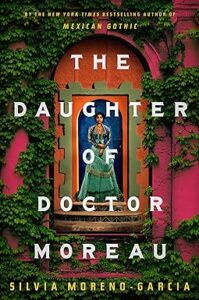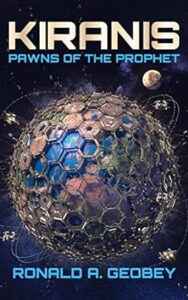The Daughter of Doctor Moreau by Silvia Moreno-Garcia
Del Rey, 2022
ISBN-13 : 978-0593355336
Available:: Hardcover, paperback, Kindle edition, audiobook
Buy: Bookshop.org | Amazon.com
This reimagining of The Island of Doctor Moreau takes place on the Yucután peninsula in 1871 against the backdrop of the Yucután Caste War. A hacendero, Joseph Lizdale, hires the adventurer Montgomery Langdon, a functional alcoholic with a special set of skills that include hunting, taxidermy, and working with dangerous animals, as mayordomo for the isolated estate occupied by Doctor Moreau, who is researching creating human/animal hybrids as replacements for rebellious Mayan workers, his daughter Carlota, and the more successful hybrids.
Six years later, Montgomery is content in the company of the Moreaus and their hybrids and Carlota has grown into a young woman. Lizdale’s funding is drying up, and the doctor’s research is stalled. Eduardo and Isidro Lizdale arrive without the elder Lizdale’s knowledge demanding men to help chase down Mayan rebels. Carlota defuses the confrontation by inviting them in. She and Eduardo fall in love and he asks her to marry him. Change, and revelations, are coming.
The point of view alternates between Carlota and Montgomery. I really liked Montgomery’s voice and enjoyed his character. Carlota frequently grated on me probably due to her naivete and meekness, but she was kind and loyal. Watching their relationship develop was interesting- he was a more thoughtful man than he often appeared.
The monstrousness of Moreau and his work is evident to the reader early on but it’s only as Carlota realizes it that we really see it. The monstrousness of the hacenderos, even one as handsome as Eduardo, is easily revealed. The hybrids, who appear to be monsters to the humans, are less monstrous than their creator and those who wish to exploit them.
This is a fast, engaging, easy read. You don’t have to be familiar with the source material, but it did enhance my reading experience.
Reviewed by Kirsten Kowalewski







Follow Us!